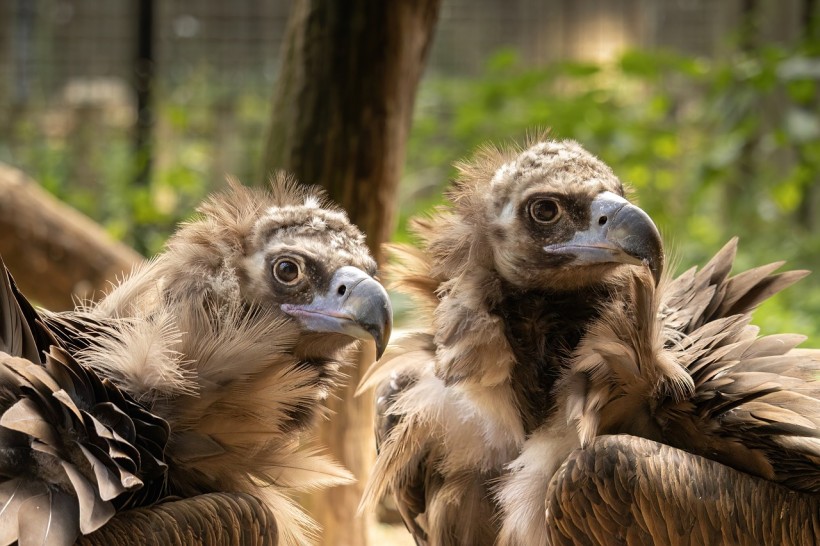The effort of an international collaboration resulted in the restoration of the previously extinct vultures in several Natura 2000 sites in Bulgaria. Moreover, the effort also generated jobs and ecotourism opportunities led by the local people.
An recently released article describes the historic reintroduction of the Cinereous Vulture (Aegypius monachus) to Bulgaria after being locally extinct since 1985. Two breeding nuclei were created in the nation after the successful release of 72 birds between 2018 and 2022, with the goal of reintroducing this critically endangered species.

Endangered Vultures Now Back From Extinction in Bulgaria After 36 Years Thanks to a Reintroduction Initiative
Reintroduction of Vultures in Bulgaria
Since the late 1800s, the Cinereous Vulture, which is classed as Near Threatened internationally, has witnessed a significant reduction in population in southern Europe, SciTech Daily reported. Its decrease has been so severe that by the mid-19th century, the bird had vanished from much of its European distribution zone. Since 1985, the species has been deemed extinct on a local level in Bulgaria.
Three Bulgarian non-government organizations started the initiative of reintroducing the vultures to the country in 2015. These organizations include the leading and oldest environmental protection NGO in the country, Green Blaks, as well as the Fund for Wild Flora and Fauna, and the Birds of Prey Protection Society.
The initiative is fittingly titled "Vultures Back to LIFE," in which the Vulture Conservation Foundation from Switzerland, EuroNatur from Germany, and Junta de Extremadura from Spain are also participants. The project has been co-financed by the European Commission's LIFE+ financial instrument.
By mid-2022, the team had acquired 72 individuals from Spain and European zoos before releasing them in carefully selected locations in the Eastern Balkan Mountains and the Vrachanski Balkan Natural Park in Northwestern Bulgaria.
READ ALSO: Raccoons, Vultures, Other Scavengers Are Picky Eaters Too: Here's Why
Effectiveness of the Reintroduction Initiative and Recommendations
According to the European Union (EU), the team developed 11 new griffon vulture colonies, more than doubling the species' territory in the nation to 10 500 km2, and increasing the number of breeding pairs by 50%. The national griffon vulture population has surpassed 150 breeding pairs and is thought to be sustainable.
The cinereous vulture was reintroduced into the nation as a breeding species in 2021, 36 years after it was declared extinct in Bulgaria. The conservation initiatives created approximately 30 permanent and 50 temporary employment, as well as chances for local vulture ecotourism.
The scientists also included in their report some recommendations for reintroducing the species. They recommend the aviary method and delayed release in which captive birds are introduced to new areas after being acclimatized so they can gain experience in the local environment.
They said that the reintroduction of Cinereous Vultures in Bulgaria in the two first release sites is going according to plan with satisfactory results, as SciTech Daily reports. Now, two nuclei populations are created; and species are beginning to breed, which bumps the species up on the Red Data Book from "Extinct" to "Critically Endangered."
The team also emphasized the need for further monitoring and adaptive management for the long-term persistence of the new national population. They noted that when the core breeding populations begin to produce about ten chicks every year and after locally fledged individuals begin to reproduce, then they could confirm that the Cinereous Vulture has successfully re-established in Bulgaria.
RELATED ARTICLE: Over 700 Black Vultures at a Georgia Sanctuary Died Due to Bird Flu Outbreak
Check out more news and information on Animals in Science Times.










!['Cosmic Glitch' in Einstein's Theory of General Relativity Could Be Explained in This New Scientific Tweak [Study]](https://1721181113.rsc.cdn77.org/data/thumbs/full/53435/258/146/50/40/cosmic-glitch-in-einsteins-theory-of-general-relativity-could-be-explained-in-this-new-scientific-tweak-study.jpeg)



